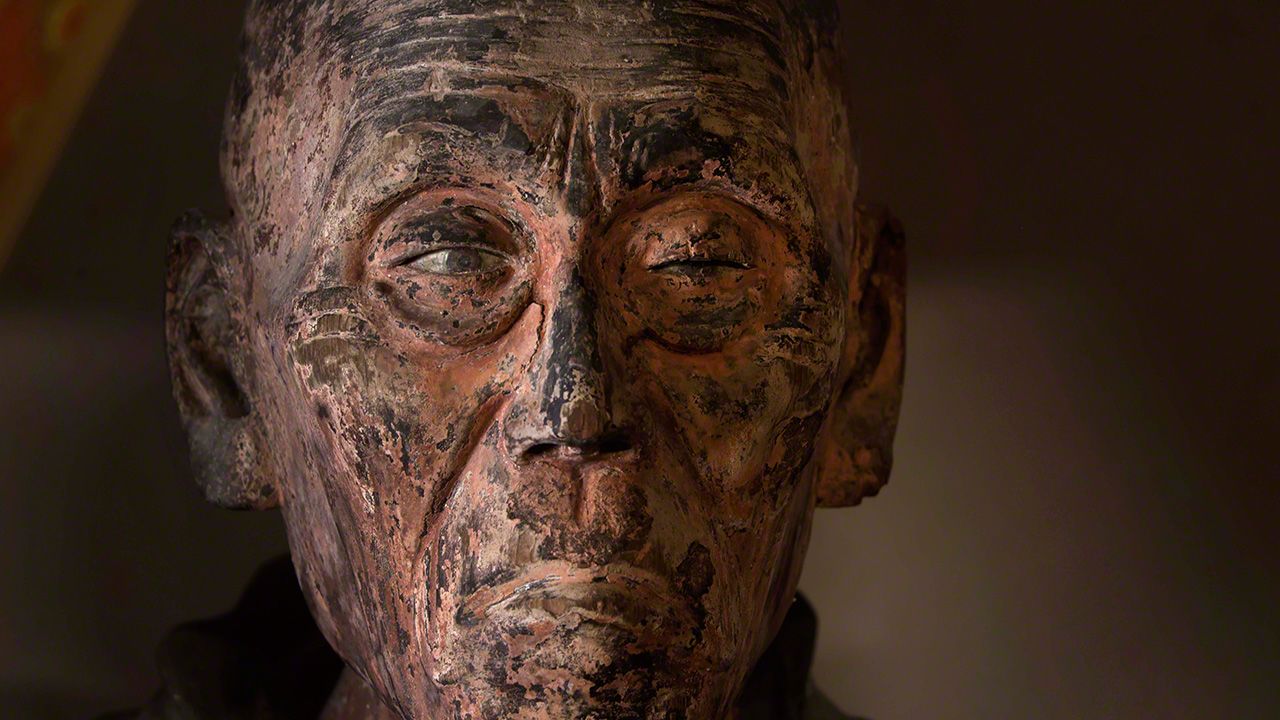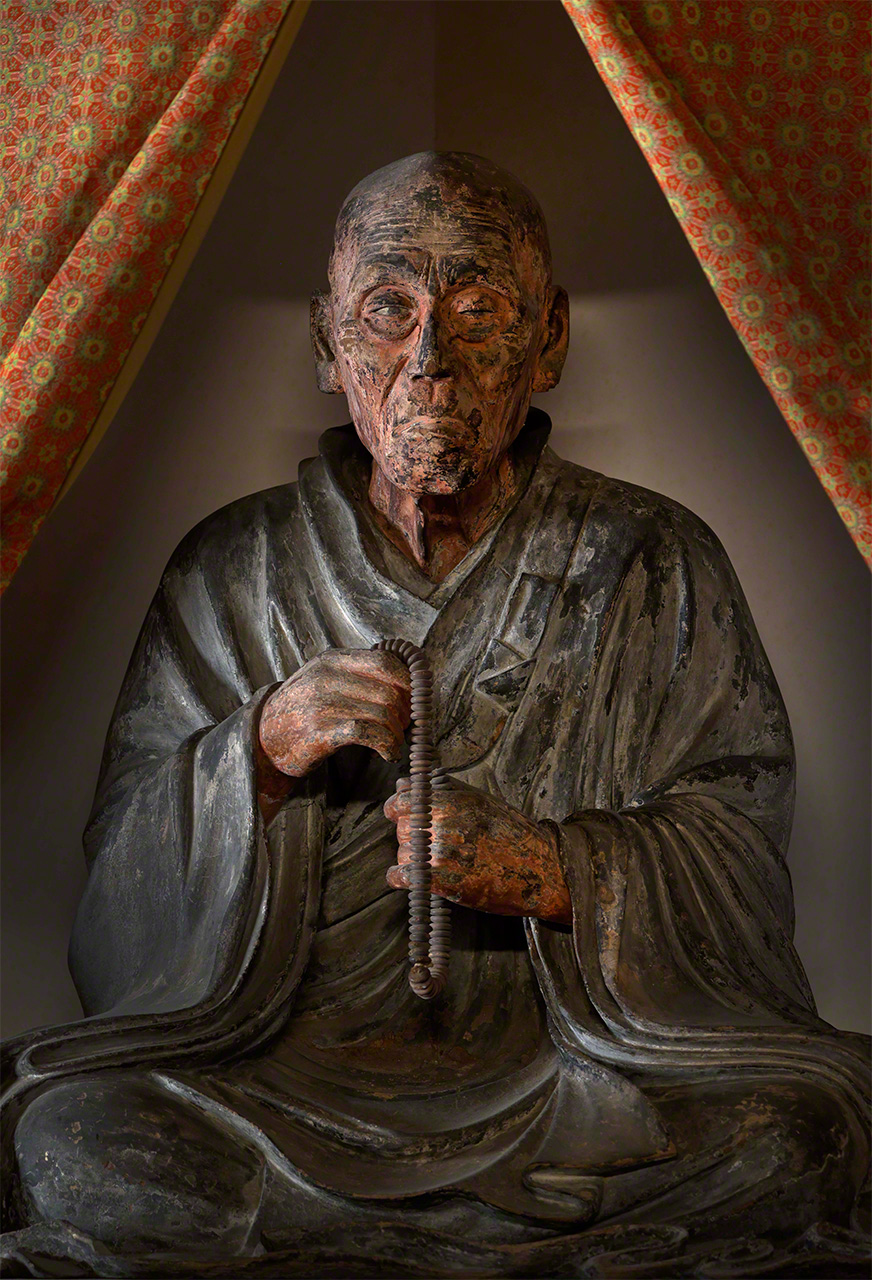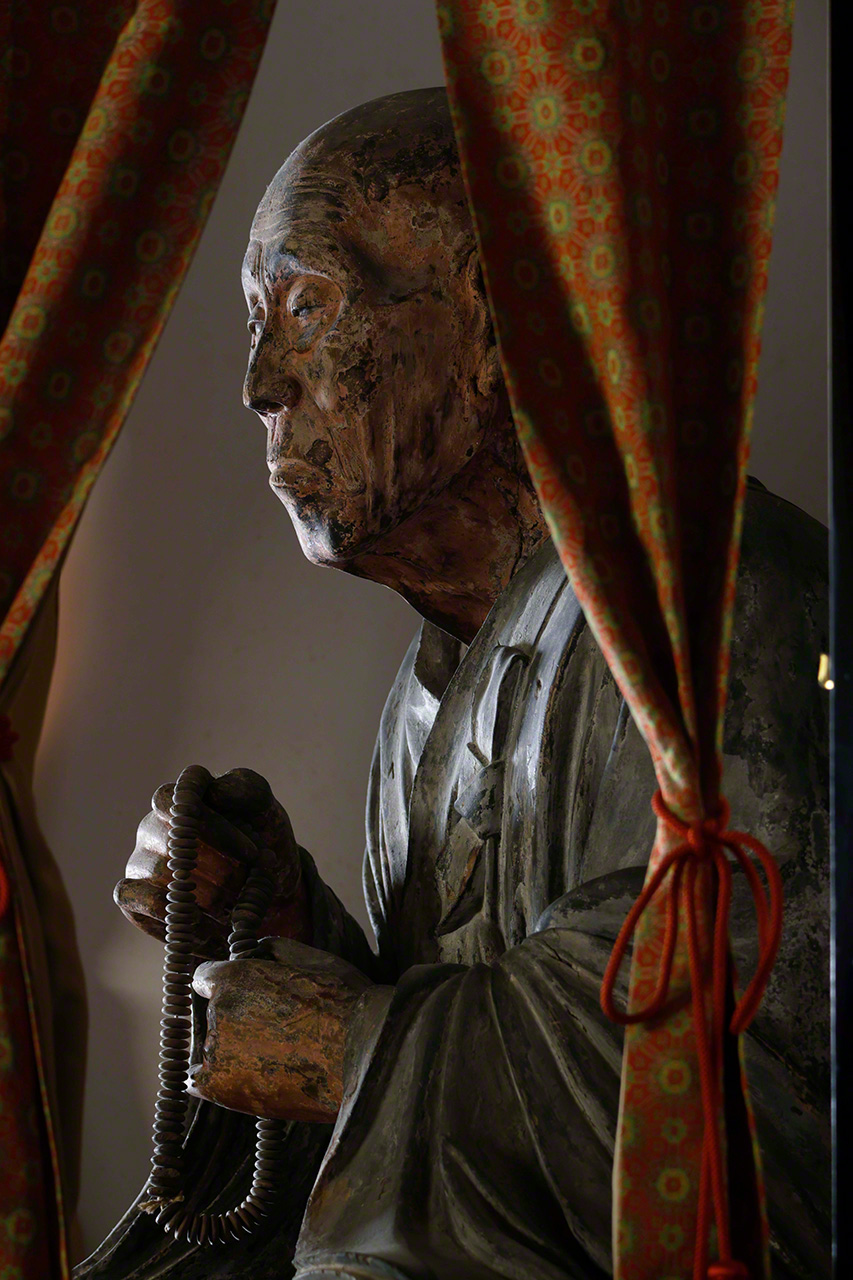
Seated Image of the Priest Chōgen
Images Arts Culture- English
- 日本語
- 简体字
- 繁體字
- Français
- Español
- العربية
- Русский
The expression on the face conveys a vivid sense of the old monk’s unconquerable resolve.
This sculpture depicts Shunjōbō Chōgen (1121–1206), revered as the driving force behind the reconstruction of the famous temple Tōdaiji in Nara. Born into a samurai family, he took the tonsure at the age of 13. After studying Shingon esoteric Buddhism at Daigoji in Kyoto, he traveled to Song-dynasty China three times, bringing the latest Buddhist learning and architectural technology back to Japan.
Tōdaiji sustained serious damage during the Genpei War between the rival Taira and Minamoto warrior clans. In 1180, Taira forces torched the temple precincts, destroying most of the precious buildings including the Great Buddha Hall and seriously damaging the famous Daibutsu (Great Buddha) itself. After the fall of the Taira, Chōgen was put in charge of raising funds to reconstruct the temple. He was 61 at the time. With the help of powerful figures including the cloistered emperor Go-Shirakawa and the shogun Minamoto Yoritomo, Chōgen worked tirelessly to raise materials and funds to rebuild the temple, and also supervised repair work on site. The Great South Gate (Nandaimon) of the temple compound (now a national treasure) incorporated an innovative style of architecture devised by Chōgen, which fused elements of Song China and Japanese styles. This is known as Daibutsu Style today. Chōgen devoted himself to the restoration project for a quarter of a century, until he died at the age of 86.

(© Muda Tomohiro)
As well as Shingon, Chōgen was a devotee of the Pure Land faith, and took the name Namu-Amidabutsu, from the prayer calling on the Amitabha Buddha to welcome the faithful to his Pure Land paradise. The image is generally attributed to Kaikei, a Buddhist sculptor of the Kei school who served as a disciple under Chōgen and took the name An-Amidabutsu.
The Genkō Shakusho, the first comprehensive history of Buddhism in Japan, says, “After the death of Chōgen, an image of his likeness was placed in the temple.” Because of this, people have generally believed that the image was made toward the end of his life and placed in the temple after he died. In recent years, however, some experts have claimed that the statue was consecrated during Chōgen’s lifetime, perhaps when he turned 80, in recognition of his achievements. In either case, there can be little doubt that the image accurately captures Chōgen’s appearance in his later years.

(© Muda Tomohiro)
Chōgen is shown reciting the sutras, prayer beads in his hands. Made from hinoki cypress using the yosegi technique, gathering multiple pieces of wood rather than hewing the work from a single block, the sculpture has eyes that were made by carving directly into the wood, rather than using the rock crystal eyes (gyokugan) popular in this period. The tightly pursed lips and the asymmetricity of the eyes—one open, the other closed—create a striking impression. It is thanks to this exacting realism that, despite the relaxed pose of the figure, the viewer is in no doubt about the unshakeable inner resolve of the elderly priest, even after all these years.

(© Muda Tomohiro)
Sculptures of revered monks like this one are known as “portrait sculptures.” In recent years, growing numbers of people have claimed that only the genius sculptor Unkei could have captured Chōgen’s character in such lifelike detail. Nevertheless, I prefer to stick to the traditional attribution of the work to Kaikei, who was close to Chōgen during his life, and would therefore have been in a good position to preserve the smallest details of his mentor’s facial features so strikingly for posterity.
Seated Image of the Priest Chōgen
- Height: 81.8 cm
- Date: Kamakura Period (1185-1333)
- Tōdaiji (Nara Prefecture)
- This image is a hibutsu (hidden image), and is not normally on view to the public except for two days a year. For information on viewing times, see the Tōdaiji website: https://www.todaiji.or.jp/en/annual/hibutsu/.
- National treasure
(Originally published in Japanese. Banner photo: Seated image of the priest Chōgen, Tōdaiji, Nara. © Muda Tomohiro.)
